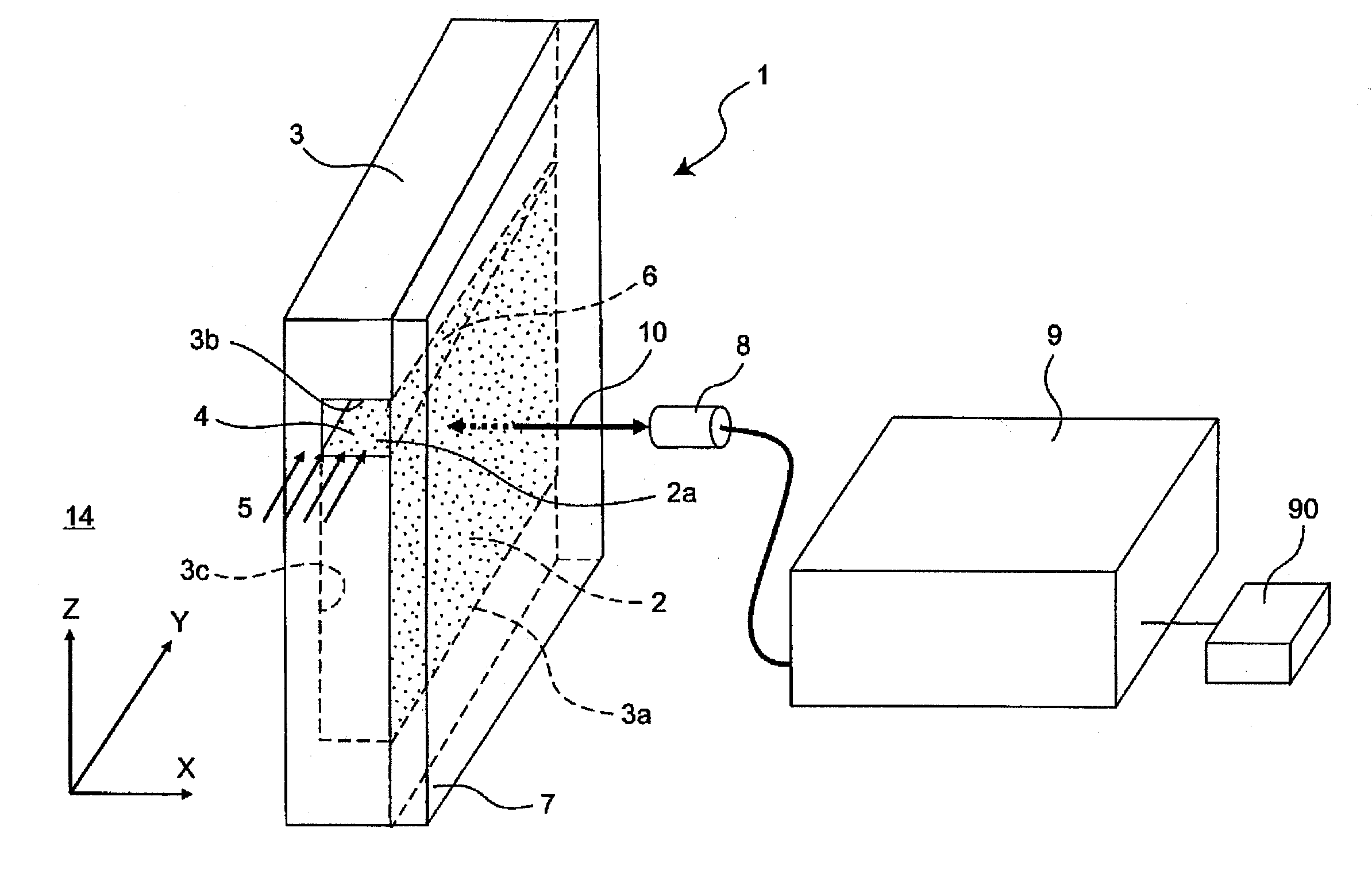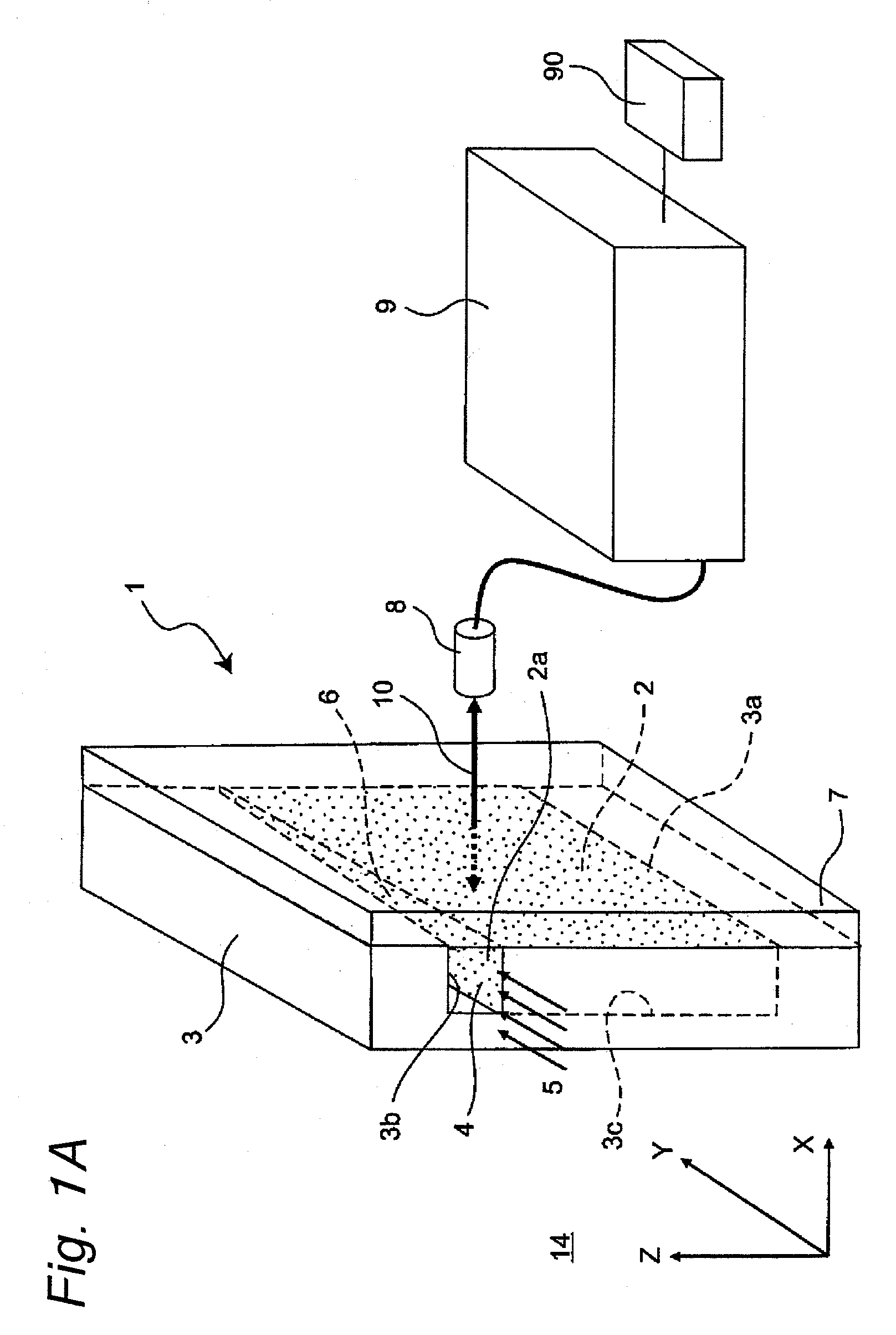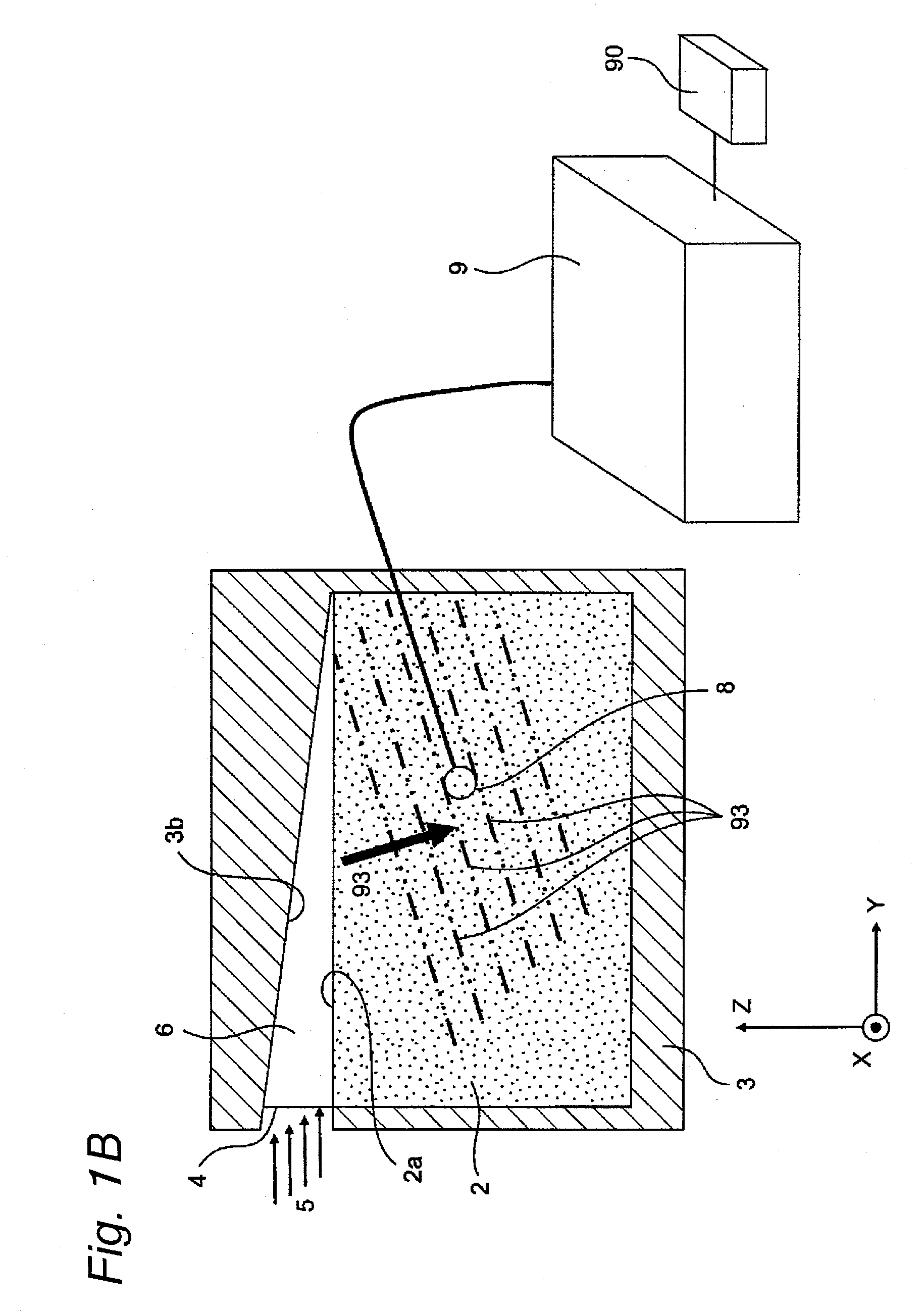Optical ultrasonic microphone
a technology microphones, applied in the field of optical ultrasonic microphones, can solve the problems of difficult formation of microphones having diaphragms, difficult to form microphones having diaphragms, and the high frequency band limitation of vibration measurements in the ldv to be used easily exceeds 1 mhz, so as to avoid reflection influences, improve the accuracy of sound pressure measurement, and avoid the effect of reflection
- Summary
- Abstract
- Description
- Claims
- Application Information
AI Technical Summary
Benefits of technology
Problems solved by technology
Method used
Image
Examples
first embodiment
[0114]Referring to FIGS. 1A to 4, a first embodiment of the present invention will be explained.
[0115]FIGS. 1A and 1B are a perspective view and a partial cross-sectional front view that show a structure of an optical ultrasonic microphone 1 in accordance with the first embodiment. As shown in FIGS. 1A and 1B, suppose that the height direction is defined as a Z-direction, and that two directions that are mutually orthogonal to the height direction are defined as X and Y-directions so that X, Y, and Z-directions are defined. The optical ultrasonic microphone 1 is disposed in the Y-direction, and the thickness direction of the optical ultrasonic microphone 1 corresponds to the X-direction.
[0116]In FIGS. 1A and 1B, the optical ultrasonic microphone 1, which is a microphone for receiving sound waves (for example, ultrasonic waves) with respect to the peripheral space of the optical ultrasonic microphone 1 filled with a gas 14 (for example, air), is provided with: a base 3 including an o...
second embodiment
[0143]FIG. 5A is a perspective view that shows a structure of an optical ultrasonic microphone 51 in accordance with a second embodiment of the present invention. Hereinafter, those components that have the same functions and shapes as those of the first embodiment are indicated by the same reference numerals.
[0144]In FIG. 5A as well, reference numeral 51 represents an optical ultrasonic microphone, 52 represents an optical acoustic propagation medium portion that has the same functions as the optical acoustic propagation medium portion 2 of the first embodiment, and is constructed by a dried silica gel that is one example of the optical acoustic propagation medium, 53 represents a base that has the same functions as the base 3 of the first embodiment, represents an opening of an acoustic horn (converging unit), 55 represents a sound wave propagation direction of a sound wave (for example, ultrasonic sound wave), 56 represents an acoustic waveguide member used for forming an acousti...
third embodiment
[0213]FIG. 9 is a YZ cross-sectional view that shows an optical ultrasonic microphone 91 in accordance with a third embodiment of the present invention. The structure shown in FIG. 9 differs from that of the first embodiment shown in FIGS. 1A and 1B in that the relative positional relationship between the LDV head 8 and the dried silica gel serving as one example of the optical acoustic propagation medium portion 2 is different and in that a mirror 92 is installed therein. Reference 94 represents a sound wave propagation direction of a sound wave in the dried silica gel 2, and reference numeral 93 represents an isophase wavefront of the sound wave propagation in a simulated manner.
[0214]That is, the LDV head 8 has its optical axis disposed not in the thickness direction of the optical acoustic propagation medium portion 2, but in a direction orthogonal to the thickness direction, in a manner so as to be made face to face with the mirror 92. Preferably, as shown in FIG. 9, the optica...
PUM
 Login to View More
Login to View More Abstract
Description
Claims
Application Information
 Login to View More
Login to View More - R&D
- Intellectual Property
- Life Sciences
- Materials
- Tech Scout
- Unparalleled Data Quality
- Higher Quality Content
- 60% Fewer Hallucinations
Browse by: Latest US Patents, China's latest patents, Technical Efficacy Thesaurus, Application Domain, Technology Topic, Popular Technical Reports.
© 2025 PatSnap. All rights reserved.Legal|Privacy policy|Modern Slavery Act Transparency Statement|Sitemap|About US| Contact US: help@patsnap.com



